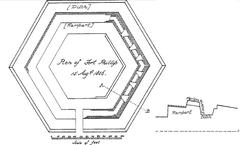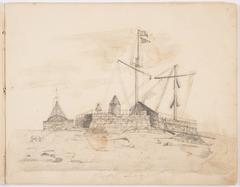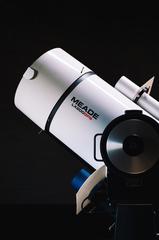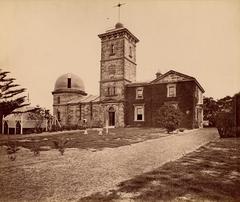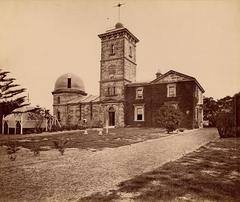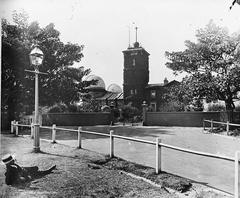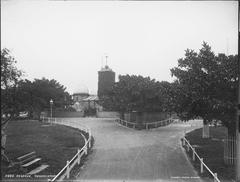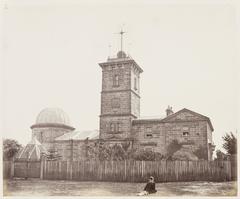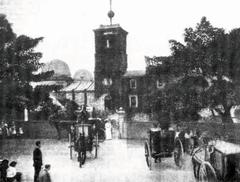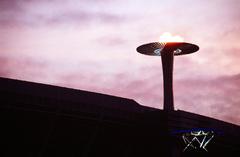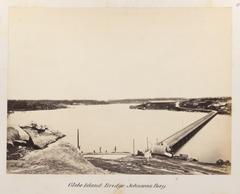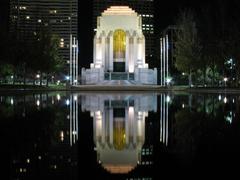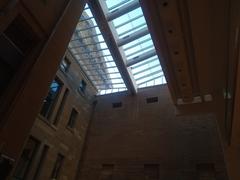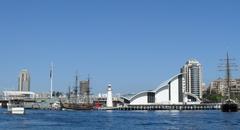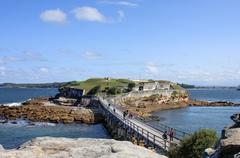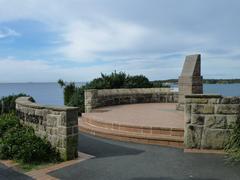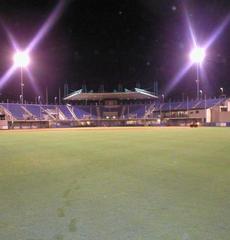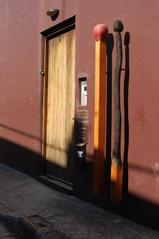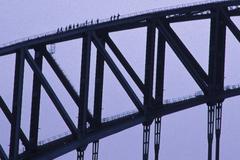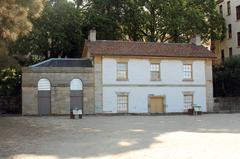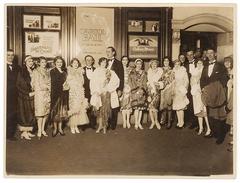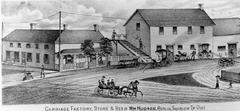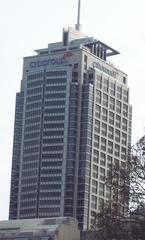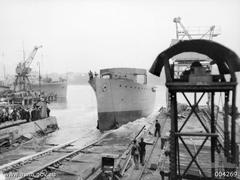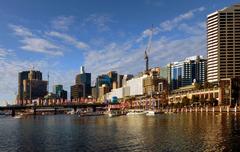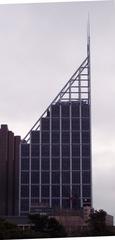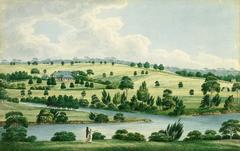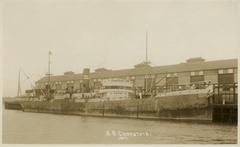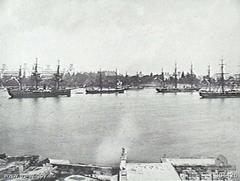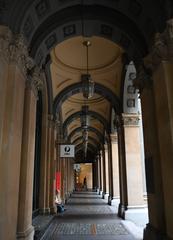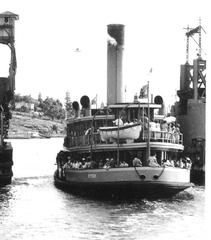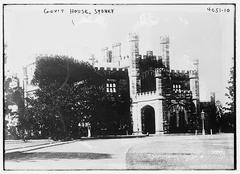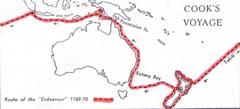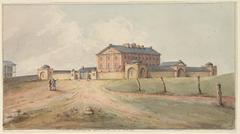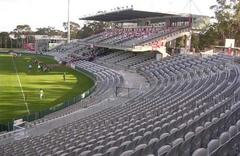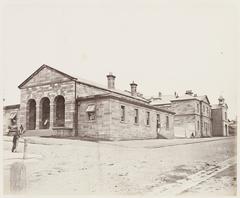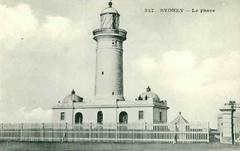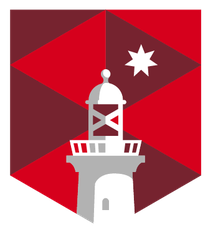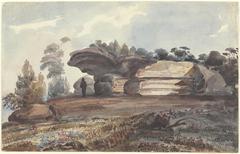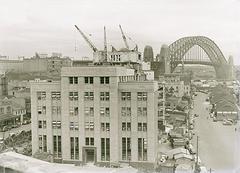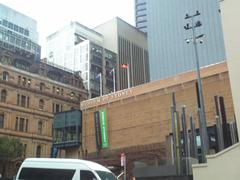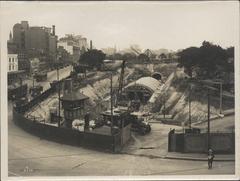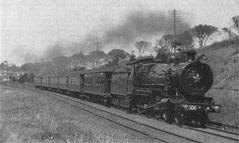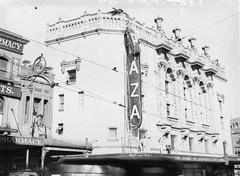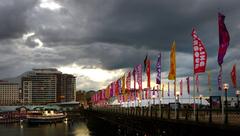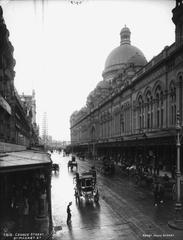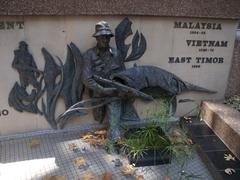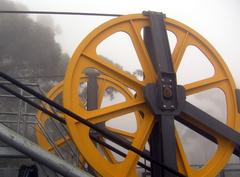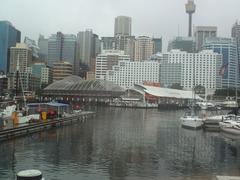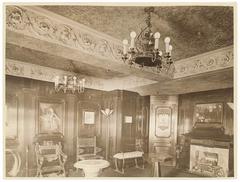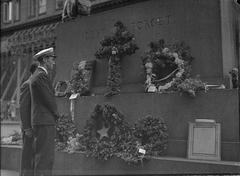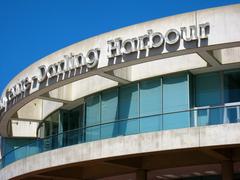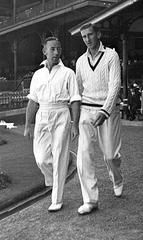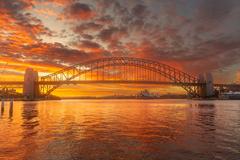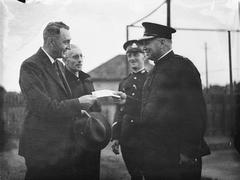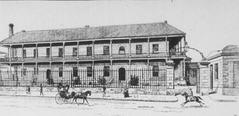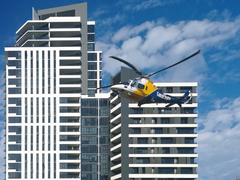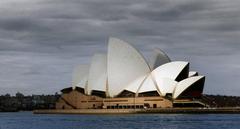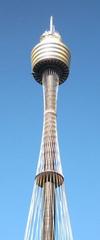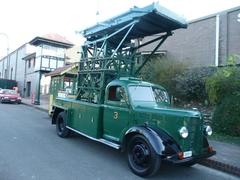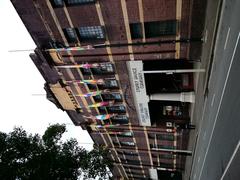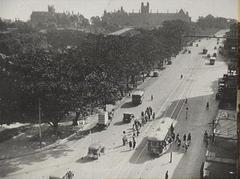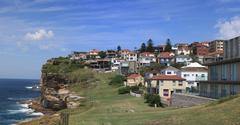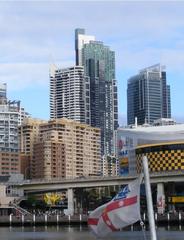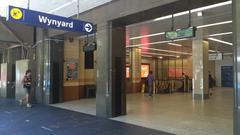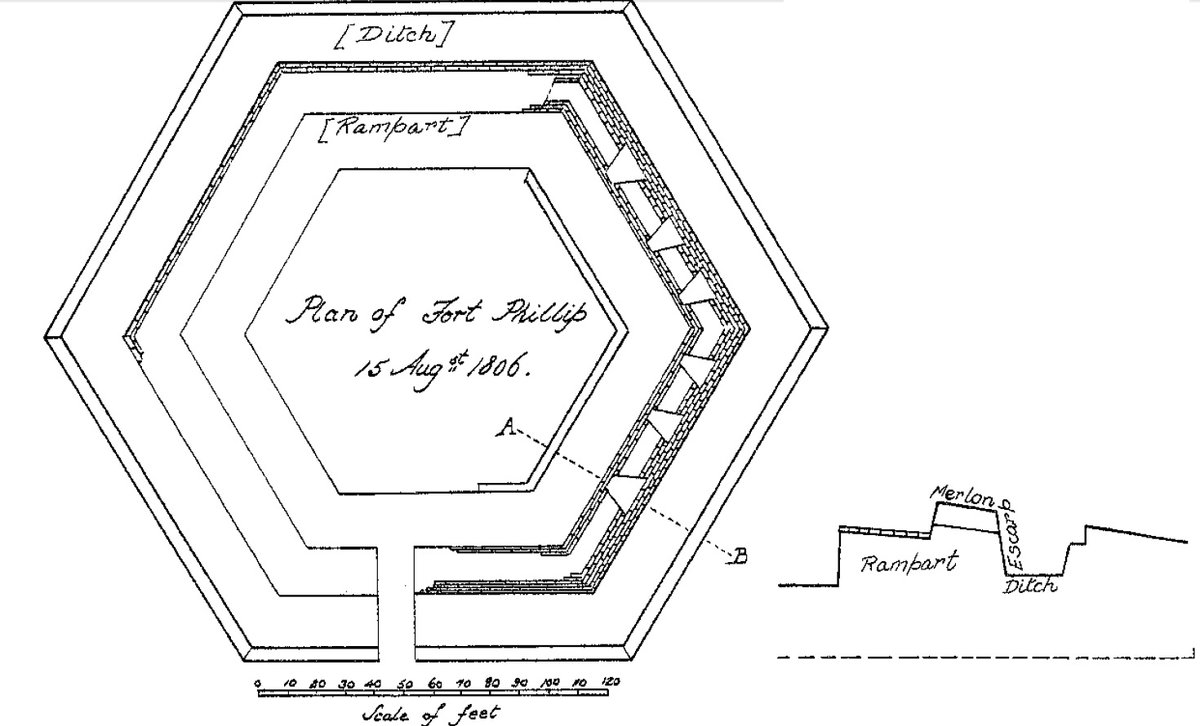
Sydney Observatory: Visiting Hours, Tickets, and Comprehensive Visitor Guide
Date: 14/06/2025
Sydney Observatory is an enduring symbol of Australia’s scientific and cultural heritage, perched atop Observatory Hill in the historic Millers Point district. Established in 1858, it stands as the nation’s oldest surviving astronomical observatory, playing a foundational role in timekeeping, navigation, meteorology, and the advancement of astronomical research. Today, it serves as a dynamic museum and public science center, welcoming visitors to explore its layered history, heritage architecture, and inspiring views of Sydney Harbour.
This detailed guide provides everything you need to plan a memorable visit: historical context, architectural highlights, practical information on visiting hours and ticketing, tips for accessibility, and insights into its unique programs and surrounding attractions.
Table of Contents
- Historical Overview and Heritage Significance
- Transformation into a Public Museum and Educational Hub
- Architectural Style and Site Features
- Notable Instruments and Scientific Legacy
- Practical Visitor Information
- Special Events and Educational Programs
- Nearby Attractions
- Frequently Asked Questions (FAQ)
- Conclusion & Planning Your Visit
- References
Historical Overview and Heritage Significance
Sydney Observatory’s origins trace back to Windmill Hill, a strategic vantage point for both early colonial industry and defense. The site evolved from a windmill (1797), to Fort Phillip (1803), to a signal station (1811), before becoming the observatory in 1858. Its establishment marked a turning point in the scientific development of New South Wales and the broader Southern Hemisphere.
The observatory’s iconic time ball, dropped daily at 1 pm, once signaled precise time to ships in Sydney Harbour, ensuring safe navigation. This critical function in maritime history, alongside its weather observation and astronomical research, underscores the site’s national significance.
The observatory is listed on the New South Wales State Heritage Register, with conservation efforts protecting its Italianate sandstone architecture, copper domes, and historic scientific instruments (Sydney Observatory – Museum of Applied Arts and Sciences, Astronomical Heritage).
Transformation into a Public Museum and Educational Hub
Since joining the Museum of Applied Arts and Sciences in 1982, Sydney Observatory has shifted from an active research institution to a center for public engagement. It now offers diverse educational programs, stargazing sessions, and interactive exhibits, making science accessible to visitors of all ages. The integration of Indigenous sky knowledge through initiatives like “Dreamtime Astronomy” reflects its commitment to cultural inclusivity (Sydney.com).
Architectural Style and Site Features
Sydney Observatory is a prime example of mid-19th-century Italianate Villa architecture, designed by William Weaver and Alexander Dawson. Its design incorporates both practical and aesthetic elements:
Key Structural Elements
- Time Ball Tower: Erected in 1858, still operating daily.
- Observatory Domes: Copper and timber domes house both historic and modern telescopes.
- 1877 Extension: Added a library and telescope chamber, adhering to the original architectural vision (Victorian Web, Dictionary of Sydney).
Materials and Construction
Constructed from Sydney sandstone, the observatory is visually and historically connected to the city’s colonial roots. Copper, timber, iron, and brass feature in the domes and scientific instruments.
Site Layout and Surroundings
Located 40–47 meters above sea level, the observatory offers expansive views of Sydney Harbour, the Harbour Bridge, and the city skyline. The landscaped grounds and gardens provide serene settings for visitors, with Observatory Hill integrating the site into the fabric of The Rocks and Millers Point (Sydney.com).
Notable Instruments and Scientific Legacy
- 29-cm Hugo Schroeder Refractor (1874): The oldest regularly used telescope in Australia.
- 7.25-inch Merz Refractor (1861): Instrumental in early southern sky surveys.
- Timekeeping Devices: Precision clocks and the time ball mechanism played a pivotal role in maritime navigation.
- Astrographic Catalogue Participation: From 1899 to 1971, Sydney Observatory contributed 53 volumes to the first photographic atlas of the sky, advancing international astronomical collaboration and astrometry (Astronomical Heritage).
The observatory also pioneered meteorological data collection and fostered the inclusion of women in scientific roles, particularly during extensive cataloguing projects.
Practical Visitor Information
Visiting Hours
- Open: Daily, 10:00 am – 5:00 pm (last entry 4:30 pm).
- Time Ball Drop: Daily at 1:00 pm.
- Evening Stargazing: Select nights; check the official schedule.
Tickets and Pricing
- Adults: AUD 15
- Concession: AUD 10–12
- Children (5–15): AUD 8
- Family (2 adults + 2 children): AUD 35–40
Admission to gardens and museum exhibits is free. Guided tours and telescope sessions require paid tickets. Book online via the Sydney Observatory website or at the entrance. Advance booking is recommended, especially for special events.
Accessibility
- Wheelchair Access: Most public areas and restrooms are accessible; some historic sections (domes) require stairs.
- Assistance: Staff available to support visitors with special requirements (Sydney.com).
- Contact: For detailed accessibility and support inquiries, reach out before your visit.
Getting There
- Location: 1003 Upper Fort Street, Millers Point, Sydney NSW 2000.
- By Train: 10–15-minute walk from Circular Quay or Wynyard stations.
- By Bus: Multiple routes serve The Rocks area.
- Parking: Limited; public transport or walking is recommended (Trip.com).
Facilities and Amenities
- Museum Exhibits: Historic instruments, interactive displays, and educational content.
- 3D Space Theatre: Immersive cosmic journeys.
- Gardens: Beautiful outdoor areas with city views.
- Gift Shop: Astronomy-themed souvenirs and educational materials.
- Restrooms: Clean, accessible facilities.
Visitor Tips
- Advance Booking: Secure your spot for guided tours and stargazing, especially during peak times (Sydney.com).
- Weather: Night viewing is weather-dependent; check forecasts and the Observatory’s website before visiting (Wanderlog).
- Dress: Wear comfortable shoes and bring warm clothing for evening sessions.
- Photography: Permitted in most areas; avoid flash during telescope use.
Safety and Etiquette
- Supervise children, especially during night sessions and stair access.
- Respect the heritage site and preserve its historic fabric.
- Follow staff instructions during tours and telescope sessions.
Special Events and Educational Programs
Sydney Observatory offers a diverse calendar of programs:
- Guided Tours: Day and night, including dome and time ball access.
- Stargazing Nights: Nighttime telescope viewing of celestial objects.
- Workshops & Talks: Covering astronomy, meteorology, and Indigenous sky knowledge.
- Family Programs: Interactive sessions suitable for children aged 6 and above.
Educational institutions can arrange tailored visits, and the observatory actively integrates Indigenous and multicultural perspectives into its offerings (Sydney.com).
Nearby Attractions
Enhance your visit by exploring neighboring landmarks:
- The Rocks Historic District
- Museum of Contemporary Art Australia
- Sydney Harbour Bridge Walk
- Royal Botanic Garden Sydney
- Sydney Opera House
- Darling Harbour
Dining and accommodation options in Millers Point and The Rocks range from casual cafés to boutique hotels (Trip.com).
Frequently Asked Questions (FAQ)
Q: What are Sydney Observatory’s opening hours?
A: Open daily, 10:00 am – 5:00 pm; last admission at 4:30 pm. Evening stargazing on select nights.
Q: How do I buy tickets?
A: Tickets are available online via the official website or at the entrance.
Q: Is the observatory wheelchair accessible?
A: Most areas are accessible; the domes require stair access. Contact in advance for assistance.
Q: Are guided tours and stargazing available?
A: Yes, daily guided tours and regular stargazing sessions are offered.
Q: Can I view the time ball drop?
A: Yes, it drops daily at 1 pm and is visible from the grounds.
Q: Is photography allowed?
A: Yes, except flash during telescope sessions.
Conclusion & Planning Your Visit
Sydney Observatory offers a unique blend of scientific achievement, architectural beauty, and immersive visitor experiences. Its transformation from a working observatory to a vibrant museum and educational hub ensures that its legacy endures for future generations. Whether you’re interested in astronomy, history, or simply enjoying one of Sydney’s best panoramic views, the Observatory is a must-visit destination.
Plan ahead by checking the latest opening hours, ticketing options, and special event schedules on the official Sydney Observatory website. Enhance your visit by joining a guided tour, attending a stargazing night, or exploring its rich heritage through educational programs.
For exclusive audio tours and updates, download the Audiala app, and follow Sydney Observatory on social media for the latest news and events.
References
- Sydney Observatory – Museum of Applied Arts and Sciences (Sydney Observatory – Museum of Applied Arts and Sciences)
- Victorian Web / Astronomical Heritage (Victorian Web, Astronomical Heritage)
- Dictionary of Sydney (Dictionary of Sydney)
- Time Out Sydney (Time Out Sydney)
- Sydney.com (Sydney.com)
- Trip.com (Trip.com)
- Museu.ms (Museu.ms)
- Wanderlog (Wanderlog)
